
~ Fiberglass and Custom Body Redesigning ~ Glass fiber reinforced laminates are all handmade and require only contact molds that are also handmade from cardboard or other materials covered with a mastic such as bondo and finished to the degree required for primer and paint. First thing is to decide what you don’t like about the stock design and then proceed to create the replacement parts mock-ups, then cast the molds against that and pull the parts from the molds... totally easy. Wear protection! Wash regularly! Work outside when sanding! Wear throw-away coveralls when grinding! Breath deeply! ~~ See the bottom of this Gallery for Detailed Laminate Custom Tips ~~ *** All Motorcycle Galleries *** beginning with 6 featuring 750cc Kawi Ninja Project Bike *** GSX Before Pix Vintage Kawi Repair Ninja Reassembly Paint and Fiberglass Accessories and Other Kawi’s Kawi History 2 Honda Project Bikes Ariel Vincent Royal Enfield Velocette Norton Hog (H.D.) Custom and Show Miscellaneous ~~~~~~~~~~~~~~~~~~~~~Hold Mouse over pix to read Title~~~Click to Enlarge~~~~~~~~~~~~~~~~~~~~~
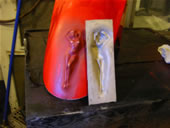
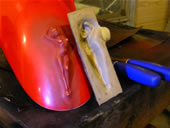

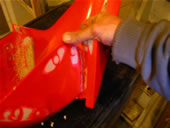
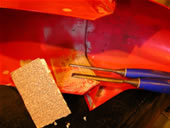
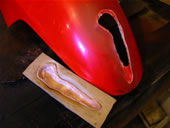

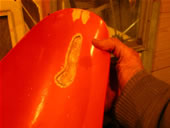
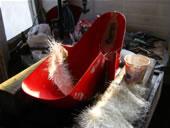
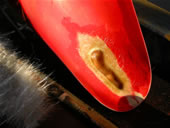
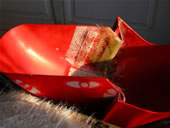
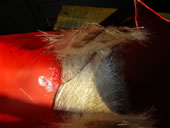
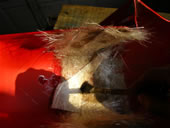

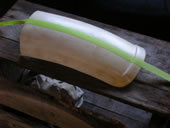
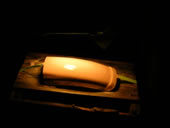

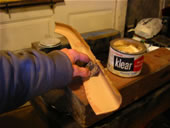
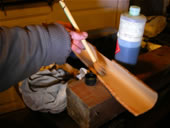
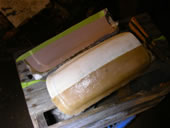


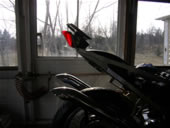

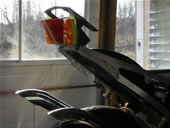
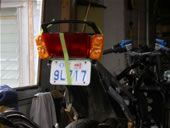
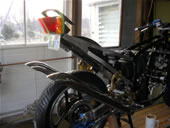
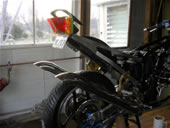
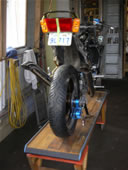

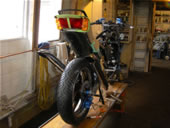
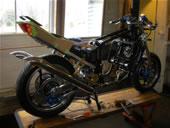
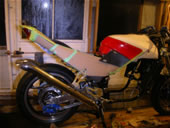
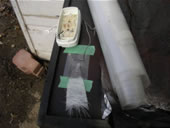
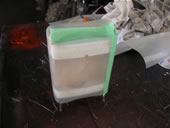

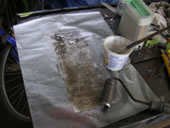
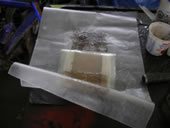
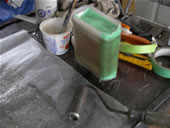
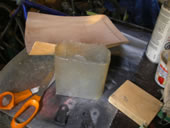
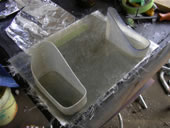
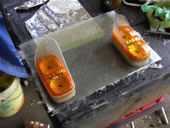
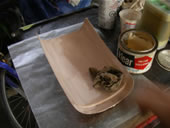
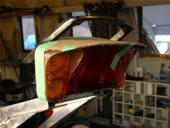
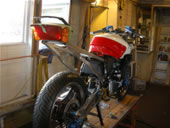
Some of these pictures may seem out of order but if you scroll down you will see the series continue. If you’re repairing a stock part with fiberglass or epoxy and you don’t know what the original material is then you should prepare a test patch area by sanding with 40 grit, grinding or wiggle cutting with a chisel (pix 78) and then applying the glass, let cure properly or heat to cure and then try to pull the material patch off. If it is difficult to remove and leaves a substrate residue then it can be used to repair that material. Most important to use mat (pix 84) for patches and as the first coat in laminate making. Cloth (the woven material) is only used as an intermediate coat between layers of mat and as a final coat for cosmetics. Use a heat lamp to cure and don’t use too much catalyst (it causes overheating on cure and discoloration). Don’t try to remove a test patch until the next day or even later and it’s a good idea to test all processes before you commit your work to any unknown.
The signal houses (pix a3272) began by wrapping some mylar (thick cellophane) around the base of a pair of the signals on top of a few wraps of masking tape to allow for clearance and shrinkage. This became the stock for the houses in the form of a oval tube, which were cut to design, sanded and placed on a sheet of wet fiberglass cast on a pane of glass. Always use carnauba wax (paste wax for floors or shoes) on molds and glass for parting. Also when the wax is quite dry then you must use Polyvinyl Alcohol (PVA) brushed or sprayed onto the waxed surface to ensure the ability to part. Get the PVA from a professional Fiberglass supplier and you don’t need much.
~These Feature Galleries lead to other Sub-galleries~ The Gang The Institute Written Articles Froggy & Cats Eye Puzzlez Web Design and The Old Page Ruby’s Creative Arts Ruby’s Garden Ceramics Decorator~Designs~Vessels Studio Kayaks & Trimaran Norm’s Custom Shop Digital Photo Gallery Garage-Studio Bicycles Lotus Motorcycles Zdravko Z28 Email is to webmaster nsoar@tbaytel.net